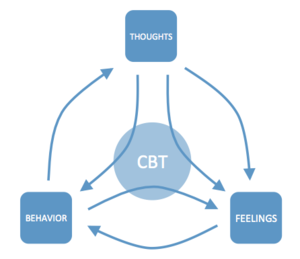The “new” buzzword in treatment is Cognitive Behavioral Therapy (CBT), even though it’s been around for decades. Many general providers now list as one of their modalities of treatment as CBT, and when looking for a psychologist a good question is “Are you a cognitive behavioralist?” Note that the question isn’t “Do you do CBT?,” because many eclectic practitioners who focus on other modalities will say yes, as will many who have had a weekend continuing education course as opposed to psychologists whose treatment approaches are based only in cognitive and behavioral theory.
An even better question for most anxiety disorders (all but Generalized Anxiety Disorder) is “Are you skilled in Exposure and Response Prevention?” So, what is Exposure and Response Prevention (ERP), and why is it so important?
Exposure and Response Prevention is based behavioral theory of learned association and extinction. The classic Pavlovian study is pairing the sound of a bell with the presentation of food to a dog. Bell, food. Bell, food. Bell, food. Over time the dog learns that whenever the bell chimes food is coming, and the dog will salivate just at the sound of the bell, even if no food is presented. This is the idea of classical conditioning, or more generally, learning through association. However, just as the dog can learn this association, it can be unlearned: if the bell is rung enough time without the presentation of the food, the dog will stop salivating as the dog has learned that the bell is no longer associated with food. This is extinction.
Extinction is the basis of ERP: when an individual is exposed to the feared object or situation repeatedly and the feared outcome doesn’t occur, he or she learns that there is no reason to avoid and be scared. Why hasn’t this already been learned? People with fears either leave before the feared outcome may occur, or believe that they survived only because they had their medication, cell phone or friends. An example would be a person with panic disorder, and is afraid of having panic attacks because they may lead to heart attacks. While there are cognitive components to the treatment, in this situation the ERP is exposing the individual to panic attacks (this isn’t done until the final stages of treatment when the patient is ready and willing to take this step). This would include engaging in activities that she has avoided: common examples would be going to crowded places like a mall, driving outside of her safety zone, riding elevators or taking a plane flight. As the person has multiple panic attacks and does not experience a heart attack, she learns that while the panic is uncomfortable, the fear of a heart attack diminishes, as do the panic attacks. This also works for PTSD, social phobia, OCD and specific phobias (e.g., exposure to germs without getting sick, handling a spider without dying).
While simple in concept, it is difficult to execute well and requires an experienced, skilled psychologist. If it were easy to do, the person with the issue would have already done it! So far, we’ve only discussed the “exposure” portion, and not the “response prevention”. A typical response in a feared situation is to leave (think fight or flight), or to hold on for dear life by taking medication, drinks of cold water or mints, or distracting oneself by talking on the phone, listening to music or “going to my happy place”. While these work on the short term, eventually the person learns that these situations are so dangerous, she have to leave, or take medications to survive them when in reality there is nothing to fear. Thus, when engaging in ERP, the individual should not leave the situation until the panic subsides without engaging in any of the typical “survival” techniques. Why? The person needs to learn that there is nothing fear; otherwise, she will learn they can survive the situation only with medication/a friend/cell phone, rather than conquering the situation without the aid of anything. Most patients who engage in ERP find it to be scary and at times difficult, but when done correctly, has great results that last.
It’s a simple concept, but practically there are many nuances that need to be appropriately addressed, and we hope that we can help you, either directly or by finding someone we believe is qualified in Exposure and Response Prevention.

